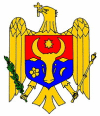The World Bank’s Board of Executive Directors today discussed Moldova’s Poverty Reduction Strategy Paper (known in Moldova as the Economic Growth and Poverty Reduction Strategy Paper – EGPRSP) and the Joint IDA -IMF Staff Advisory Note (JSAN) on Moldova’s EGPRSP. Moldova’s EGPRSP was adopted by the Government in May 2004 and submitted to the World Bank and IMF in June 2004.
The Bank’s Board supported the three-pillar EGPRSP that focuses on
(i) sustaining economic growth through maintaining macroeconomic stability, improving the business environment, and accelerating structural reforms;
(ii) strengthening human development through improving education and health; and
(iii) strengthening social protection and inclusion.
The Board recognized that the proposed strategy, underpinned by a sound diagnostic of the poverty situation and transition experience, is comprehensive and can, over time, foster growth and reduce poverty.
„Moldova’s EGPRSP was developed through an extensive participatory process that involved stakeholders and civil society on all levels,“ said Paul Bermingham, the World Bank’s Country Director for Ukraine, Belarus and Moldova. „The World Bank stands ready to support the Government in strengthening the EGPRSP during its implementation so that it can become an effective and credible policy framework for poverty reduction. We also look forward to our Board’s discussion of the next World Bank Country Assistance Strategy for Moldova in December 2004, which would outline the necessary support in selected areas to contribute to the effective implementation of the EGPRSP,“ he added.
The Executive Directors noted with concern several critical areas where current policies do not match those articulated in the EGPRSP. These include slow progress in implementing structural reforms, increased government interventions in economic activity, and the unsustainable medium-term fiscal framework. Directors noted that these actions limit the scope for IDA concessional assistance. They urged the authorities to rectify these policy actions, especially in the areas of state monopolies, licensing and regulation, land consolidation and agriculture subsidies, pension reform, and privatization. They underscored the need for the authorities to demonstrate a good track record of implementation and encouraged Moldovan authorities to continue to engage stakeholders and civil society in the EGPRSP implementation, monitoring and evaluation.
IDA – International Development Association is the Bank’s concessional lending
arm that provides key support for the Bank’s poverty reduction mission. Its
assistance is focused on the poorest countries– with a per person income of
less than $885–to which it provides interest-free loans and grants.
IMF – International Monetary Fund




